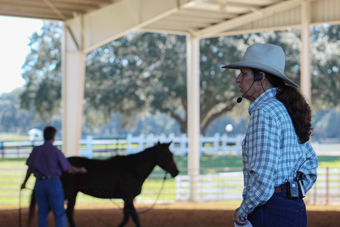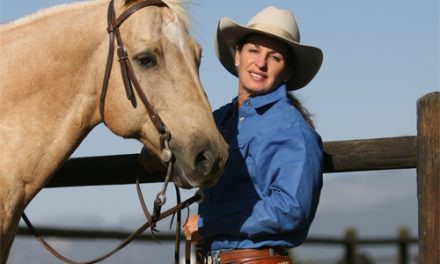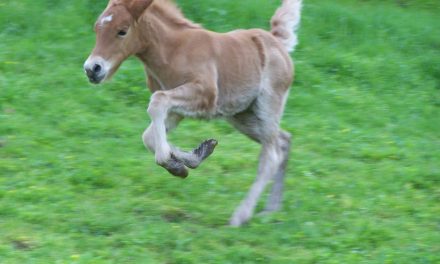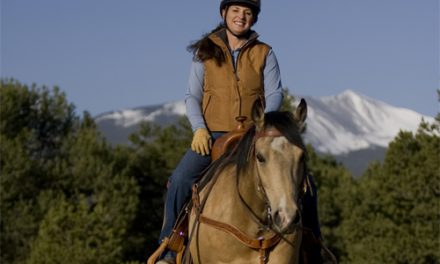Riding Right with Julie Goodnight
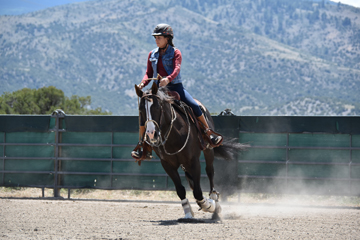
Dear Julie,
I have a 12-year-old quarter horse gelding that hops up off his front legs whenever I ask him to go somewhere he doesn’t want to go like across the creek or out of the barn yard. Or if I stop to talk to someone coming home from a trail ride, he fusses and hops and will eventually rear straight up if I don’t let him go. What should I do when he acts this way and how can I break him of this disturbing habit?
Fearing Rearing
Dear Fearing
Rearing is an interesting behavior that has two separate and opposite causes; but regardless of the cause, the solution is always the same. Rearing is also one of the most dangerous behaviors of the riding horse, because of the propensity of the rider to lose balance pull the horse over on himself.
Although rearing is often a fear response for the horse, it can become a learned behavior when the rearing causes the rider to inadvertently reward the horse for his actions. Whether the behavior is learned or instinctive (fear response) it’s caused by one of two things: when forward motion is inhibited or when the horse refuses to move forward.
The hops your horse makes are just mini-rears. He’s threatening that if he doesn’t get what he wants, he’ll rear. He’s learned from experience that if he rears, you’ll give in and let him have his way. Most riders are understandably afraid of their horse rearing and so will drop the argument at that point—it only takes one time for this to become learned behavior.
A common example of rearing in a refusal to move forward would be when you ask him to cross the creek and he doesn’t want to or is afraid to; this is often a fear response but can become a learned response if he gets what he wants. An example of rearing when forward motion is inhibited is when you stop him on the way home and he wants to keep going; this is typically a learned response.
It’s always important to understand the root cause of a behavior and whether or not you are dealing with a learned response or instinctive fear, before developing a plan to correct it. In the case of rearing, whether it’s a refusal to move forward or when forward motion is inhibited, the solution is always the same—you must move the horse forward, even if it means not going where you want.
A strong rider may be able to move the horse actively forward in the direction he doesn’t want to go, with aggressive use of the aids. If you are not a strong enough rider to enforce your commands, then you would need to move the horse forward in any direction you can to thwart him from rearing. In this case, I would continue to work the horse hard away from the place he didn’t want to go (i.e., trot or lope small circles with constant changes of direction) then take him there to rest. Let him catch his breath then gently ask him to go one or two steps closer to the place he doesn’t want to go. If he obeys, praise him and let him rest again; but if he refuses, repeat the process, making him work hard again.
When the horse is threatening to rear unless you let him keep going back to the barn or with the other horses, you’ll need to move him forward to thwart the rearing, then immediately turn him away and start asking him to constantly change directions R-L-R-L, making sure to always turn him away from the direction he wants to go. Finish each change of direction with a couple of steps of disengagement of the hindquarters (see www.juliegoodnight.com for more info on what this is and how to do it). After he is sufficiently tired of that exercise, ask him to stand again and see if he’s changed his mind—if not, repeat the process until he rethinks it.
The longer a learned behavior has been engrained, the more difficult it’s to dissuade the horse from his bad behavior. Think of it this way, every time he got what he wanted, even if only for a second, he scored a point. Often by the time a problem gets to the magnitude of rearing in refusal, the scores is about 487 to nothing; so you’ll have a lot of points to make up. With patience and persistence, you can bring your score up and you’ll eventually be victorious.
Again, rearing—especially when it’s a learned response—is one of the most dangerous behaviors of riding horses and it will likely require a strong and confident rider to persuade the horse that it’s not in his best interest. If your horse is rearing frequently, you may want to enlist a trainer to even up the score in short order. However, you’ll only win this game by scoring the final points yourself—the trainer can not make the horse be obedient to you, only you can. But perhaps the trainer can put you in a better position to win.
Good luck and be safe. Enjoy the ride!
Julie Goodnight, Trainer and Clinician
www.juliegoodnight.com
In this series, master trainer and clinician Julie Goodnight discusses the riding terms and techniques you probably know (or should know). She’ll define rein, seat and leg cues you’ll need for the best communication with your horse. Then she’ll help riders solve problems with their own horses. Learn the proper terms and apply your aids for a better grasp of horsemanship and a better riding relationship with your horse. Catch Julie’s show, Horse Master, on RFD-TV.
###

